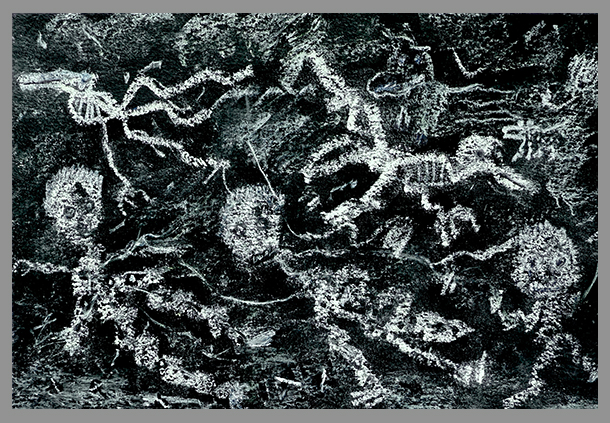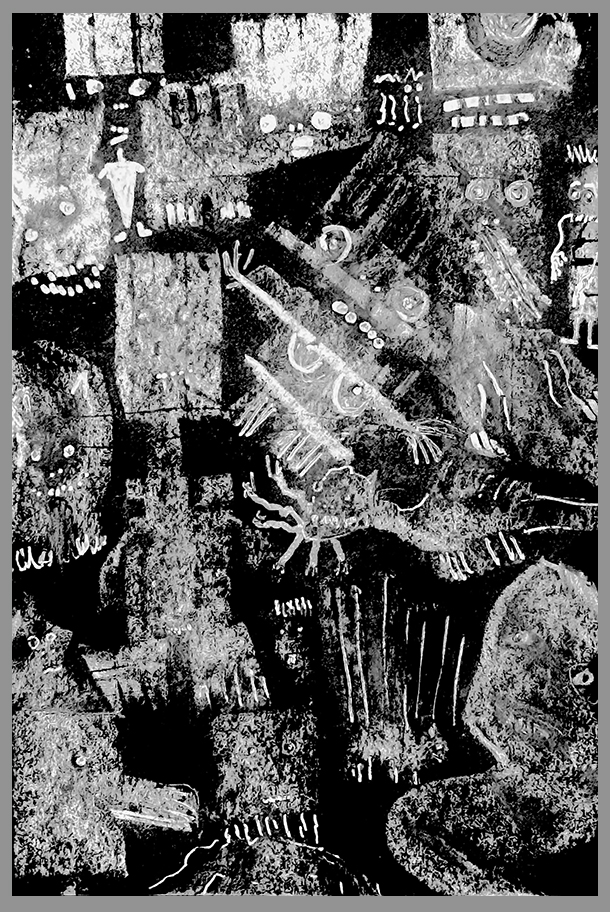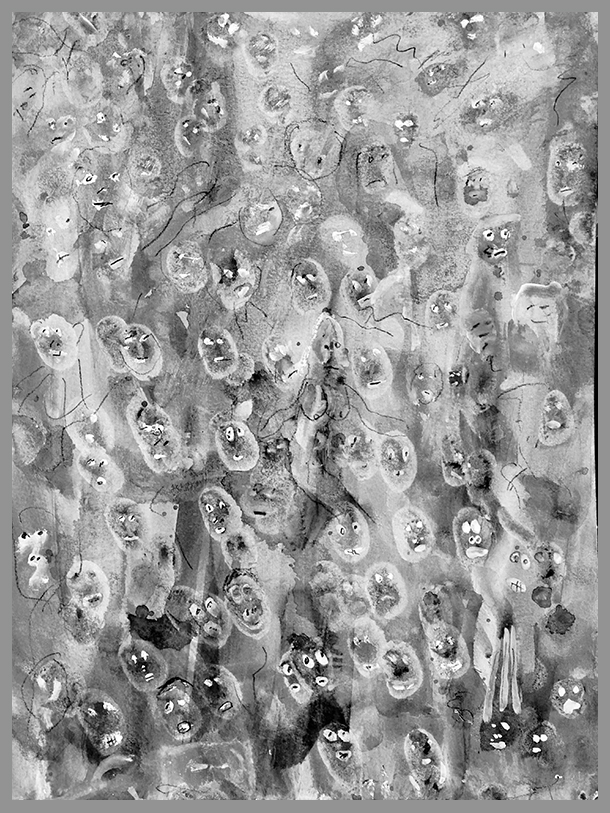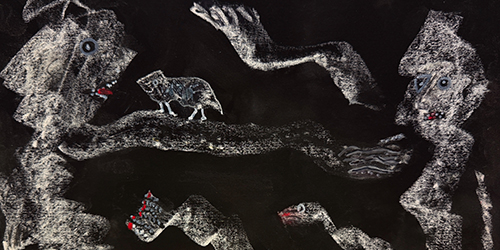
USING A PLAIN, MONOCHROMATIC PALETTE, THE NEW YORK-BASED ARTIST CONJURES UP SOME AUSTERE, ATMOSPHERIC IMAGES
Published on October 22, 2025
by Edward M. Gómez, with Steven Hirsch
Steven Hirsch (Instagram: @stevenhirsch), a photographer for one of New York’s well-known tabloids of the crooks and con men who routinely pass through the criminal courts of downtown Manhattan — that’s his usual beat — is also a prolific painter and one of brutjournal’s regular contributing artists. It was only a few years ago that he first took up a brush and began experimenting with paint on paper and, later, occasionally, on canvas.
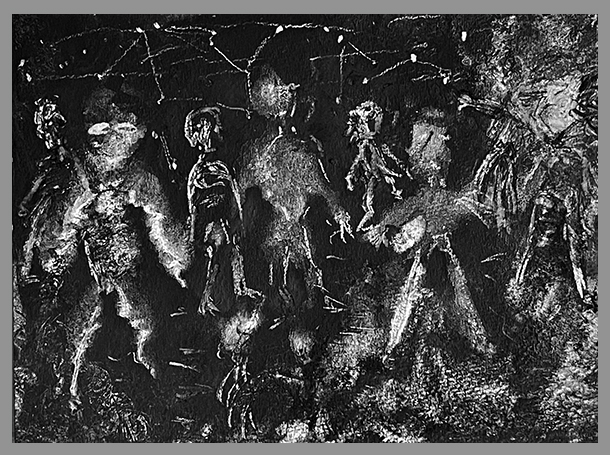
Exploring color with gusto, he has produced many pictures featuring bold, bracing palettes, the exuberance of which often perfectly suits the subjects he chooses for his paintings. Frequently inspired by the scandal-loving headlines of the tabloid-newspaper genre he knows so well — corporate miscreants, corrupt politicians, rich women with too much plastic surgery who get mixed up in tawdry capers — his art finds delectable raw material in the Zeitgeist’s more extreme impulses.
Recently, though, Steven shared with us a portfolio of images that, compared to much of what we had previously seen emerge from his studio sessions with his funky muses, seemed to have taken a turn for the austere, the ethereal, the otherworldly, and the melancholy.
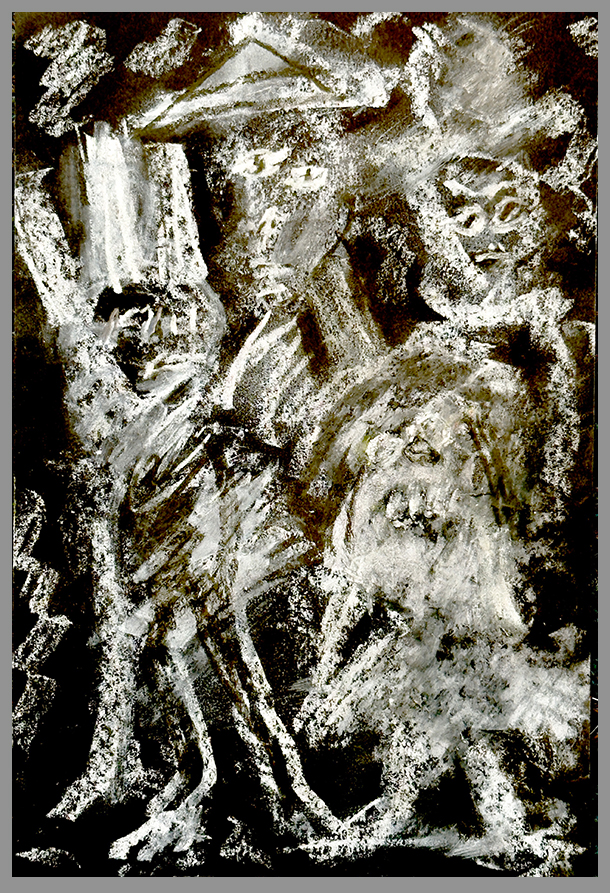
Primarily produced using chalk on paper and rendered in a simple, black-and-white palette, Steven’s “Ghosts” series, as he calls it, features phantom-like figures lumbering or wafting through each image’s pictorial space with a lugubrious air. They appear luminous against their black backgrounds as they make their appearances and then seem eager to budge and vamoose.
Steven already has contributed some of his other images to our ongoing series of articles inspired by the theme of what we’re calling our current historical moment’s “New Dystopia” (see his paintings of the Orange-faced Felon in Chief here).
We asked Steven Hirsch to tell us about his “Ghosts” pictures. What prompted him to start making them, and what special message, if any, might he wish to convey with these images?
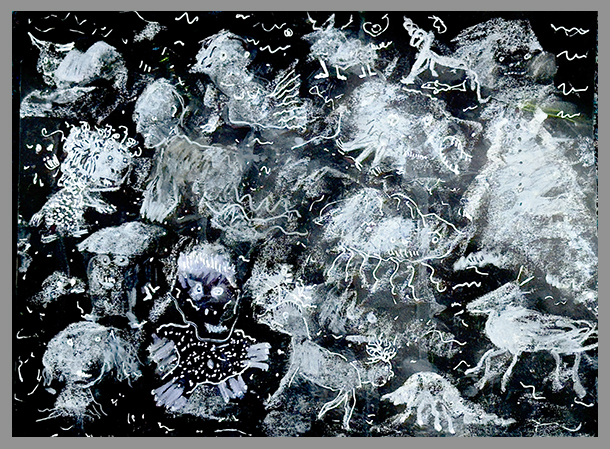
He told us, “Looking at my ghost pictures gives me a deep, unsettling feeling. They aren’t the kind of ghosts that jump out and scare you, or beings from past lives. Instead, they seem to me to represent the constant, tired headache that, for many people, being alive feels like right now. To me, they reflect the how the current messy, dystopian situation in the United States and around the world feels for so many people.”
Describing the figures that appear in these drawings, Steven added, “They’re chalky and rough, and it look likes they’re being rubbed out even as you watch them. The feeling that they’re somehow unstoppably disappearing — it makes me feel anxious. It’s the feeling that nothing is real or permanent anymore — not the news or the government or the weather or even what you might believe about yourself. Nowadays, it seems, we’re losing our solid shapes. Just like these ghosts, many of us feel we’re falling apart in a fog of fear.”
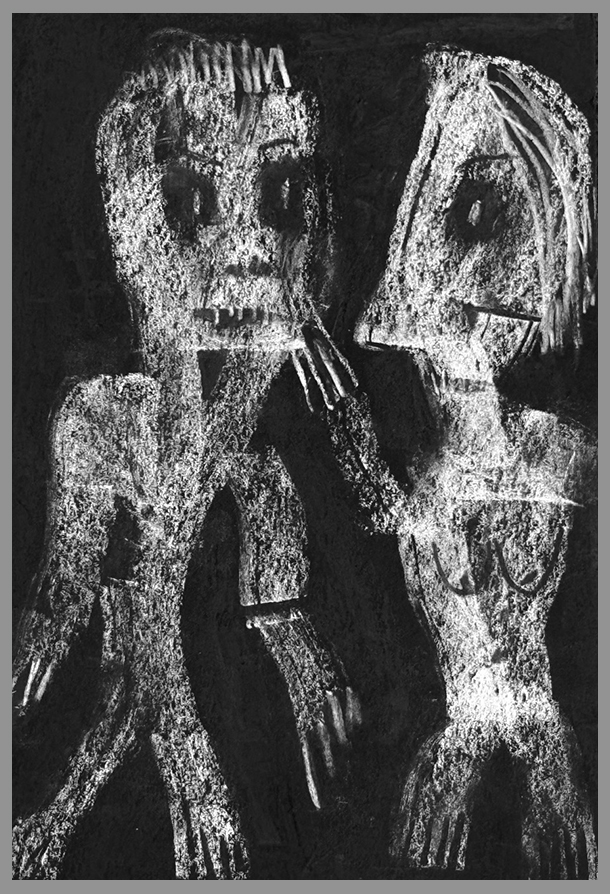
Imagining the general character or the personalities of his phantom-like subjects, Steven observed, “These ghosts aren’t angry; they’re just watching something terrible they can’t quite figure out, something scary that’s hiding in the dark all the time. I think they’re just like us — always looking at their phones and feeling stressed but never really doing anything about it. Maybe they can’t.”
Steven noted, “When they huddle in a group, they look like crowds of people who feel lonely even when they’re together; they can’t really talk or work together. Instead, each one remains separate. Alone.”
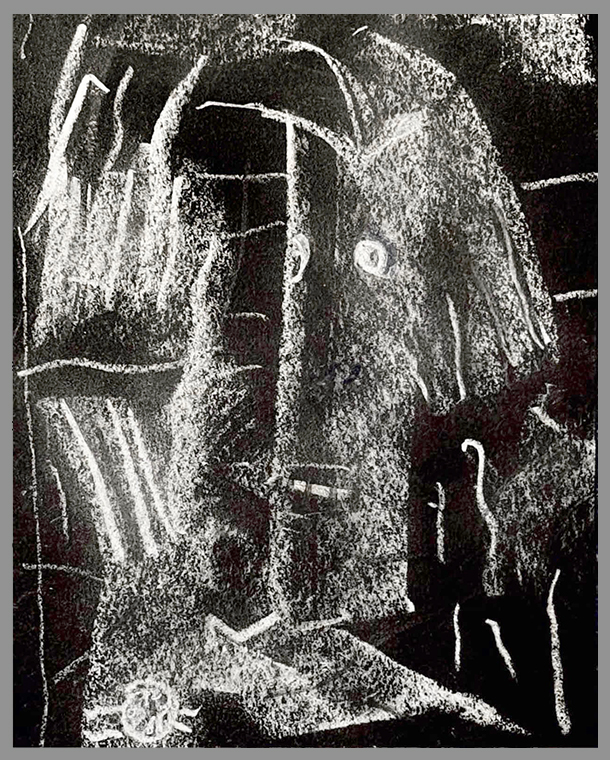
We asked Steven about his use of black and white for this batch of pictures, pointing out, as he was well aware, that this palette marked a dramatic turn from his usual use of electric lime green and screaming pinks and oranges.
The artist said “Here, plain black and white probably help make a sense of hopelessness feel worse. There’s none of the relief my usual colors might provide, just the scratchy white of a bad TV signal against backgrounds of huge, crushing darkness. It’s like living in a world in which you can’t trust what you see or hear, or know what’s real.”
Alas, these may be accurate group portraits of some members of the human family in these early-21st-century times.
Steven said, “These aren’t ghosts from another world; they’re the unhappy spirits of today, stuck between the life we were promised and the mess we actually got. They express what it feels like to be waiting for the next crisis. They seem to capture the weirdness of a time in which everything seems normal until, suddenly, it all falls apart.”
[Scroll down to see more drawings on paper from Steven Hirsch’s “Ghosts” series.]
